 For some strange, unexplainable reason, fans always want things to be connected – it’s like we feel some kind of perverse joy of seeing otherwise unrelated works of art connect in some sort of shared continuity, even when those connections were likely unintentional and don’t enhance any of the works in a substantial manner. I’m not talking about something like, say, the Marvel Cinematic Universe, where each movie has been designed from the get-go to be a puzzle piece where every element fits closely together with the rest, with the payoff being characters and events reaching over multiple properties. I’m talking about movies and games which have absolutely no connection to each other than <i>maybe</i> a shared name or the same person working on them, but which fans still insist share a continuity. Take, for example, the theory that every movie directed by Quentin Tarantino is set in the same universe (with some, like “Inglorious Basterds”, being things that actually happened, while others, like “Kill Bill”, being movies from that world), or the theory that every single Pixar movie from “Cars” through “Monsters Inc” and “Brave” to “Inside Out” all fits neatly on a singular timeline, or the famous “Tommy Westphall Universe” theory which states that, because of crossovers, every single TV show in existence shares a universe… inside the mind of an autistic little boy. Yeah, none of it makes any sense, and yet for whatever reason people keep looking for new ways to shove the square piece into the round hole in order to make all the pieces fit.
For some strange, unexplainable reason, fans always want things to be connected – it’s like we feel some kind of perverse joy of seeing otherwise unrelated works of art connect in some sort of shared continuity, even when those connections were likely unintentional and don’t enhance any of the works in a substantial manner. I’m not talking about something like, say, the Marvel Cinematic Universe, where each movie has been designed from the get-go to be a puzzle piece where every element fits closely together with the rest, with the payoff being characters and events reaching over multiple properties. I’m talking about movies and games which have absolutely no connection to each other than <i>maybe</i> a shared name or the same person working on them, but which fans still insist share a continuity. Take, for example, the theory that every movie directed by Quentin Tarantino is set in the same universe (with some, like “Inglorious Basterds”, being things that actually happened, while others, like “Kill Bill”, being movies from that world), or the theory that every single Pixar movie from “Cars” through “Monsters Inc” and “Brave” to “Inside Out” all fits neatly on a singular timeline, or the famous “Tommy Westphall Universe” theory which states that, because of crossovers, every single TV show in existence shares a universe… inside the mind of an autistic little boy. Yeah, none of it makes any sense, and yet for whatever reason people keep looking for new ways to shove the square piece into the round hole in order to make all the pieces fit.
Gaming’s most infamous example of this is most certainly “The Legend of Zelda” series, which has had its fair share of direct sequels (“A Link to the Past” and “A Link Between Worlds”; “Wind Waker”, “Spirit Tracks” and “Phantom Hourglass”; and, of course, the original “Legend of Zelda” and “Zelda 2: The Adventure of Link”), but for the most part, every game in that franchise has been standalone, telling its own story which only shares a couple of elements with all of its counterparts. There’s always a mute blond boy who dresses in green, a princess named Zelda, and very often the land that needs to be saved is called Hyrule and the person that it has to be saved from is called Ganon. But that’s just about where the similarities end, story-wise. Now, a reasonable person could, perhaps, make the assumption that only one of the games is truly “canonical”, and all of the others are just myths and legends of the same events passed on and modernized through Hyrule’s history, or maybe that each story takes place in an alternate reality, which is why the layout of Hyrule changes drastically from game to game. But the Internet is anything but reasonable, so obviously there were immediately dozens upon dozens of theories explaining just how everything fits together!
Of course, the games were never meant to fit together, if only because one of them, “Ocarina of Time”, creates a time paradox due to a split timeline, so unless you place that game at the very end (which is impossible because it already has a direct sequel, “Majora’s Mask”), it’s impossible for all games to be on the same timeline. That didn’t really stop the fans, though, who fully embraced the split timeline theory and basically placed half of the Zelda games prior to “Ocarina of Time”, while the other half were split equally between the two timelines, in a manner that, admittedly, sort of makes sense if you don’t think about it too hard. Then Nintendo themselves actually chimed in and decided to throw the fans a bone by releasing their own timeline, revealing in “Hyrule Hystoria” that there were actually <i>three</i> different timelines, including the two created by the game’s events and one that essentially results in from a Game Over screen. Okay, so far so good! As it turns out, the fans got it mostly right after all – there <i>was</i> a super secret plan to the entire franchise after all! Nintendo truly knew what they were doing! Alright, I’m going to have to concede here, guys, maybe I was wrong. Maybe not every fanmade shared universe theory is complete BS born out of an inexplicable desire to make things that were never designed as puzzles pieces fit together. Maybe I was just too dumb to understand it. Well, now that I’ve been enlightened and we’ve got the official world from Nintendo about where everything stands, let’s see where the latest game, “Breath of the Wild”, will stand!
Oh. It doesn’t really fit anywhere in any of the four established time periods, does it?
Well, this is awkward. As Kotaku reported, the storyline of “Breath of the Wild” is constructed in such a way so that it deliberately contradicts events in every single one of the timelines, with the evidence tying it to any of them being flimsy at best. A natural assumption would be that it takes place before “Ocarina of Time” and the time split, but the game explicitly states that A) it takes place 10,000 years in the future, and B) Ganon appeared 100 years prior. And since “Ocarina” had the first appearance of Ganon, we can safely eliminate that time period and just assume that it falls into one of the three split timelines. But that doesn’t really make any sense either, because, as I said, there’s evidence to counter it – it can’t be the “Wind Waker” ‘sealed Ganon’ timeline because in those games the layout of Hyrule (or, as it’s known, New Hyrule) is completely different, and “Breath of the Wild” features locations from old Hyrule… But at the same time, the Rito (a race of bird people) appear in the game, and they’ve only existed in that timeline! I’m only scratching the surface, but if you really dig deep into it, “Breath of the Wild” doesn’t really fit anywhere at all. Or, from a different point of view, with enough stretches of the imagination it can fit literally anywhere post-“Ocarina”.
With that mind, it’s starting to seem less and less likely that the timeline presented in “Hyrule Historia” was ever approved by Shigeru Miyamoto or anyone with decision power over the Zelda timeline, because of it was, we wouldn’t be in this situation. So remember, guys – unless a shared universe is confirmed by the developers from the get-go (like in, say, “Assassin’s Creed”), assume it doesn’t exist. Otherwise you’re just going to end up disappointed when something contradicts it. Either that, or you’ll need to resort to hilarious stretches of the imagination to justify its existence, and nobody needs that hassle.
 Yes, folks, I know it’s a shock, but Konami still somehow continue to make EA seem like Blizzard with every action they take. It just blows my mind on so many levels – how is there not a SINGLE person there who has some kind of power and isn’t completely and utterly insane? It honestly seems like they’re deliberately trying to bury themselves, which is especially jarring considering the fact that for over 30 years Konami used to be one of gaming’s top tier companies. In case you have no idea what I’m talking about at all, let me try to summarize the situation the best I can. If you’ve been playing videogames at all, chances are you’ve at least heard of some of Konami’s franchises – they’re the powerhouses behind awesomeness like “Silent Hill”, “Castlevania”, “Metal Gear Solid”, “PES”, “Contra”, “Dance Dance Revolution” and many, many more! They’re the guys that originated the Konami code, which is the most famous cheat code in all of gaming, to the point where it was referenced in everything, from numerous non-Konami games to even Disney’s “Wreck-It Ralph”. They’re holding a treasury of licenses… And they have no idea what to do with them.
Yes, folks, I know it’s a shock, but Konami still somehow continue to make EA seem like Blizzard with every action they take. It just blows my mind on so many levels – how is there not a SINGLE person there who has some kind of power and isn’t completely and utterly insane? It honestly seems like they’re deliberately trying to bury themselves, which is especially jarring considering the fact that for over 30 years Konami used to be one of gaming’s top tier companies. In case you have no idea what I’m talking about at all, let me try to summarize the situation the best I can. If you’ve been playing videogames at all, chances are you’ve at least heard of some of Konami’s franchises – they’re the powerhouses behind awesomeness like “Silent Hill”, “Castlevania”, “Metal Gear Solid”, “PES”, “Contra”, “Dance Dance Revolution” and many, many more! They’re the guys that originated the Konami code, which is the most famous cheat code in all of gaming, to the point where it was referenced in everything, from numerous non-Konami games to even Disney’s “Wreck-It Ralph”. They’re holding a treasury of licenses… And they have no idea what to do with them. 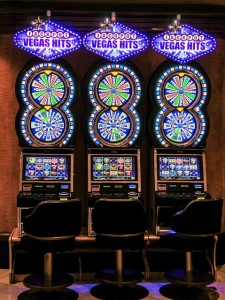 Gaming and iGaming. As words, they’re so similar that they’re literally just a single letter apart, and yet as terms they couldn’t be any more different! The people who play videogames and the people who play things like online slots, roulette and blackjack tend to belong to very different social circles and demographics, as far as studies have shown us. And yet there is some overlap between them – clearly, or else I wouldn’t be here talking to you about it! Indeed, yours truly is a living example of someone who appreciates gaming in all of its forms, be it normal gaming or iGaming, and honestly, it’s not like I’m alone. Considering the fact that there are billions of people who play videogames worldwide, it’s not hard to imagine that at least a small percentage of them also likes to play slots occasionally, with even more gamers wanting to get into online gambling, but being unsure of how exactly to pull it off.
Gaming and iGaming. As words, they’re so similar that they’re literally just a single letter apart, and yet as terms they couldn’t be any more different! The people who play videogames and the people who play things like online slots, roulette and blackjack tend to belong to very different social circles and demographics, as far as studies have shown us. And yet there is some overlap between them – clearly, or else I wouldn’t be here talking to you about it! Indeed, yours truly is a living example of someone who appreciates gaming in all of its forms, be it normal gaming or iGaming, and honestly, it’s not like I’m alone. Considering the fact that there are billions of people who play videogames worldwide, it’s not hard to imagine that at least a small percentage of them also likes to play slots occasionally, with even more gamers wanting to get into online gambling, but being unsure of how exactly to pull it off.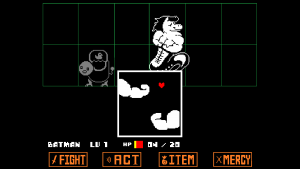 Random chance has played a major part in games since games have existed. And I’m not just talking about videogames, I’m talking about games in general – practically every single game ever invented in the history of mankind has incorporated chance within its rules to some degree. While in some, like sports, chance is often a negligible part of the entire experience, in others, like gambling,
Random chance has played a major part in games since games have existed. And I’m not just talking about videogames, I’m talking about games in general – practically every single game ever invented in the history of mankind has incorporated chance within its rules to some degree. While in some, like sports, chance is often a negligible part of the entire experience, in others, like gambling, 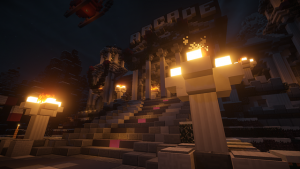
 Only a few days ago, the latest installment of the popular “Far Cry” franchise, “Far Cry Primal”, was released to critical and commercial success. The game holds a 77/100 “positive” rating on review aggregator Metacritic, and while sales numbers still haven’t been released, it’s a safe bet that it has made UbiSoft just a tad bit richer. But that’s not what we’re here to talk about today, as I’m fairly certain the overwhelming majority of you don’t really want to listen to sales figures and ratings and all that jazz. Oh, no, I’ve got something a lot more interesting in store for you, guys – the the UbiVerse!
Only a few days ago, the latest installment of the popular “Far Cry” franchise, “Far Cry Primal”, was released to critical and commercial success. The game holds a 77/100 “positive” rating on review aggregator Metacritic, and while sales numbers still haven’t been released, it’s a safe bet that it has made UbiSoft just a tad bit richer. But that’s not what we’re here to talk about today, as I’m fairly certain the overwhelming majority of you don’t really want to listen to sales figures and ratings and all that jazz. Oh, no, I’ve got something a lot more interesting in store for you, guys – the the UbiVerse!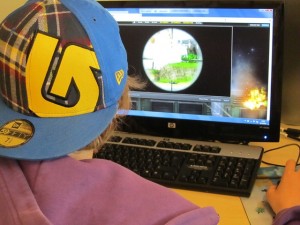 I am a living example myself – I’ve played far more games of all kinds throughout my childhood and am not even remotely violent – I struggle to swat a fly! But I am aware that could be an accident. There have been many experiments and researches done on the topic. Recently, a study was conducted in Bath University, Bristol Uni and UCL with over 2900 kids. The results are yet again not very clear – there is none or very insignificant relation between kids exposed to games starting from the age of 8-9 and their behavior – violence, attention disorders and depressions at later age. This is by far not a first – there has been tens and tens of studies supporting each side of the argument, making it impossible to state for sure what the truth is. One thing is for sure – all this suggests that the issue is far more complex than a just yes/no answer.
I am a living example myself – I’ve played far more games of all kinds throughout my childhood and am not even remotely violent – I struggle to swat a fly! But I am aware that could be an accident. There have been many experiments and researches done on the topic. Recently, a study was conducted in Bath University, Bristol Uni and UCL with over 2900 kids. The results are yet again not very clear – there is none or very insignificant relation between kids exposed to games starting from the age of 8-9 and their behavior – violence, attention disorders and depressions at later age. This is by far not a first – there has been tens and tens of studies supporting each side of the argument, making it impossible to state for sure what the truth is. One thing is for sure – all this suggests that the issue is far more complex than a just yes/no answer.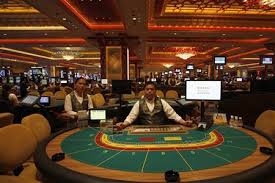 This topic was inspired by a conversation I had with my wonderful girlfriend a few days ago. I’m a gamer, and as such I play EVERYTHING – console games, handheld games, mobile games, Facebook games, board games, roleplaying games, card games, party games, you name it. That’s just what I do – I believe that every single game I play, regardless of its medium, the device it’s played on (or lack thereof) or its intended context can teach me something about gaming and how everything fits together. Naturally, that also extends to casino games. I don’t really frequent casinos all that often – I’ve gone maybe about 3-4 times in my entire lifetime, mostly just to see what it’s like (and once because one of my friends decided to get married in a hotel instead of in a church and after that all the guys went to the casino attached to the hotel and played for something like four hours – first wedding night be damned).
This topic was inspired by a conversation I had with my wonderful girlfriend a few days ago. I’m a gamer, and as such I play EVERYTHING – console games, handheld games, mobile games, Facebook games, board games, roleplaying games, card games, party games, you name it. That’s just what I do – I believe that every single game I play, regardless of its medium, the device it’s played on (or lack thereof) or its intended context can teach me something about gaming and how everything fits together. Naturally, that also extends to casino games. I don’t really frequent casinos all that often – I’ve gone maybe about 3-4 times in my entire lifetime, mostly just to see what it’s like (and once because one of my friends decided to get married in a hotel instead of in a church and after that all the guys went to the casino attached to the hotel and played for something like four hours – first wedding night be damned). 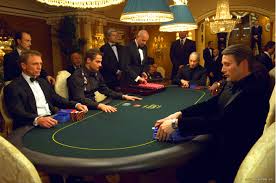 Obviously, she’s entirely right (I know that people often joke that women are always right, but my girlfriend really is almost always right), at least when it comes to the algorithms part… But I had to highly disagree with her conclusions that just because online casinos aren’t truly random that automatically means they must be cheating. The truth is that they have no reason to cheat – they’d get more than enough money just by playing fair! Hell, if a casino had to cheat in order to survive, how are physical casinos (where it’s impossible for the dealers to cheat) still around? I mean, it’d make no sense! Most casino games are designed with a house edge anyway, so literally all a casino would have to do to remain functioning and profitable is to have an active player base, and everything else will come into place as it is. But even though this is rather obvious to me as someone who has intimate knowledge of how game theory works, quite a lot of people just assume that online casinos must be cheating – take
Obviously, she’s entirely right (I know that people often joke that women are always right, but my girlfriend really is almost always right), at least when it comes to the algorithms part… But I had to highly disagree with her conclusions that just because online casinos aren’t truly random that automatically means they must be cheating. The truth is that they have no reason to cheat – they’d get more than enough money just by playing fair! Hell, if a casino had to cheat in order to survive, how are physical casinos (where it’s impossible for the dealers to cheat) still around? I mean, it’d make no sense! Most casino games are designed with a house edge anyway, so literally all a casino would have to do to remain functioning and profitable is to have an active player base, and everything else will come into place as it is. But even though this is rather obvious to me as someone who has intimate knowledge of how game theory works, quite a lot of people just assume that online casinos must be cheating – take 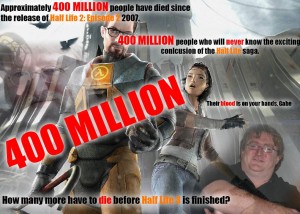 Recently,
Recently,